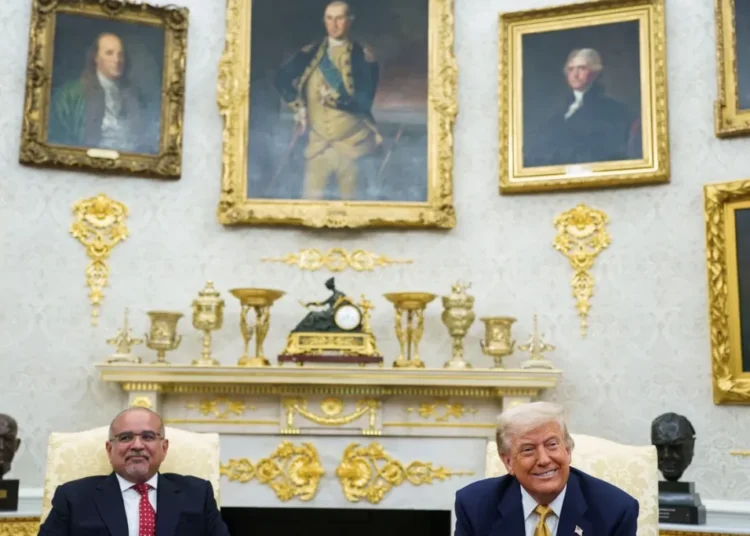“First they came for the Jews.” Many Americans remember that line as the beginning of a confession, offered in 1946 by Martin Niemoller and taught to schoolchildren ever since. First they came for the Jews, then they came for the Communists and the trade unionists; when they finally came for him, he said, “there was no one left to speak for me.”
In its simple and steady progression, it is a powerful illustration of the consequences of apathy. But it is a distortion. In Niemoeller’s original version, the Nazis first came for the Communists, as indeed they did.
The distinction is more than a historical detail. It’s a key to how a ruthlessly effective movement succeeded. The Nazis vilified Jews not just as a race but as the supposed masterminds of Communism, or “Judeo-Bolshevism,” a twin enemy that was external and internal all at once. The Nazis cast their violence as pre-emptive self-defense.
That’s the authoritarian playbook: Promise safety through vigilance, unity through fear; describe aggression as preservation. Senator Joseph McCarthy did it when he turned the Cold War into a hunt for invisible enemies at home. Vladimir Putin does it when he brands dissenters as foreign agents. Donald Trump does it when he says that America is under attack “from within” and immigrants are a poison in the nation’s blood.
From the moment they emerged as a movement, the Nazis exploited Germans’ fear of a civil war, which was, above all, the fear of a Communist uprising. That fear swept the Nazis into power in January 1933 and gave them license to crack down on the political left, imprisoning more than 100,000 German political opponents, most of whom were Communists. On the strength of this fear, a majority of the remaining deputies in the German parliament passed the Enabling Act, granting Hitler’s cabinet power to legislate without parliamentary interference.
Just days after taking office, Hitler met with top German military leaders. Many arrived regarding the new chancellor as a grandstanding upstart. By evening’s end, after a two-and-a-half-hour speech promising to “completely annihilate” the political left and restore the army’s pre-eminence, he had won many of the military leaders over. The fear of internal subversion became the foundation of national unity.
Niemoller, a Lutheran pastor, enthusiastically backed Hitler at that time, believing that the Führer would restore health and greatness to Germany. Only in subsequent years did Niemoeller grasp Nazism’s oppressive nature and speak out against it. He was arrested in 1937 and was imprisoned for the next eight years.
Meanwhile, Hitler’s government stepped up its campaign against Judeo-Bolshevism, depicting the Soviet Union as the world’s most powerful Jewish organization — “World Enemy No. 1.” Large “anti-Bolshevik” exhibitions toured German cities during the 1930s, to expose the Kremlin’s Semitic face and deadly designs. Hundreds of thousands of German boys and men saw these ghastly shows before joining their nation’s war.
The Eastern Front, often presented as a later chapter in the history of the Holocaust, was in fact its ultimate expression. Launched in June 1941, it was the largest invasion in human history, a genocidal war to annihilate a political order, a culture and a people. Even after the defeat at Stalingrad, when the Red Army advanced westward, the Nazi propagandist Joseph Goebbels warned of the “Jewish death squads” following the Soviet divisions, a threat that bound Germans together more powerfully than any promise of victory.
That emotional economy — the transformation of fear into cohesion — is both the origin of the authoritarian impulse and its creation. Once a society accepts that its survival depends on eradicating an omnipresent enemy, the step from paranoia to persecution becomes automatic.
In the postwar United States, McCarthyism echoed this logic, albeit on a less catastrophic scale. With the Communist Soviet Union as a distant enemy, Senator McCarthy persuaded Americans that the true threat lurked in Washington, Hollywood and the universities. The Cold War’s geopolitical anxiety was turned inward, into a national inquisition that equated dissent with disloyalty. Public hearings and blacklists became instruments of purification. McCarthy’s anti-Communist witch hunt rendered fear into the glue of national cohesion.
In Mr. Putin’s Russia, independent journalists, opposition politicians and even human rights groups have been branded as tools of a foreign conspiracy to weaken the nation from within. By projecting internal dissent as external sabotage, Putin has fused patriotism with persecution, ensuring that beleaguerment and fear, not freedom, remain Russia’s unifying creed.
Mr. Trump, too, has employed this emotional grammar, casting himself as the nation’s last line of defense against “invaders” and “radical left lunatics” who threaten to destroy the country. His politics of fear conjure a siege without end, in which belonging itself becomes a test of loyalty.
In Hungary, Viktor Orban has adopted that grammar too. Dissenters are branded agents of George Soros and the European Union, enemies conspiring to erode the nation’s Christian soul. So has Narendra Modi, in India, where political opposition and Muslim minorities alike are cast as threats to Hindu unity. So has Recep Tayyip Erdogan, in Turkey, where opposition figures, journalists and academics are routinely accused of plotting with foreign conspirators to undermine the state.
In each case, the branding of political opponents as extremists and foreign agents collapses all distinctions between opposition and enmity, turning political contest into a struggle for survival and disagreement into an existential threat. In each case, the promise of renewal depends on identifying those who must be purged.
As Martin Niemoller’s litany makes clear, the fear of an “enemy within,” once unleashed on the world, always returns home. And when it does, the boundary between self-defense and persecution disappears. That is the warning of history, and the reason we must keep telling it whole.
Jochen Hellbeck is a distinguished professor of history at Rutgers University and the author of “World Enemy No. 1: Nazi Germany, Soviet Russia, and the Fate of the Jews.”
The Times is committed to publishing a diversity of letters to the editor. We’d like to hear what you think about this or any of our articles. Here are some tips. And here’s our email: [email protected].
Follow the New York Times Opinion section on Facebook, Instagram, TikTok, Bluesky, WhatsApp and Threads.
The post The Lesson We Teach Schoolchildren About the Holocaust Is Wrong appeared first on New York Times.




